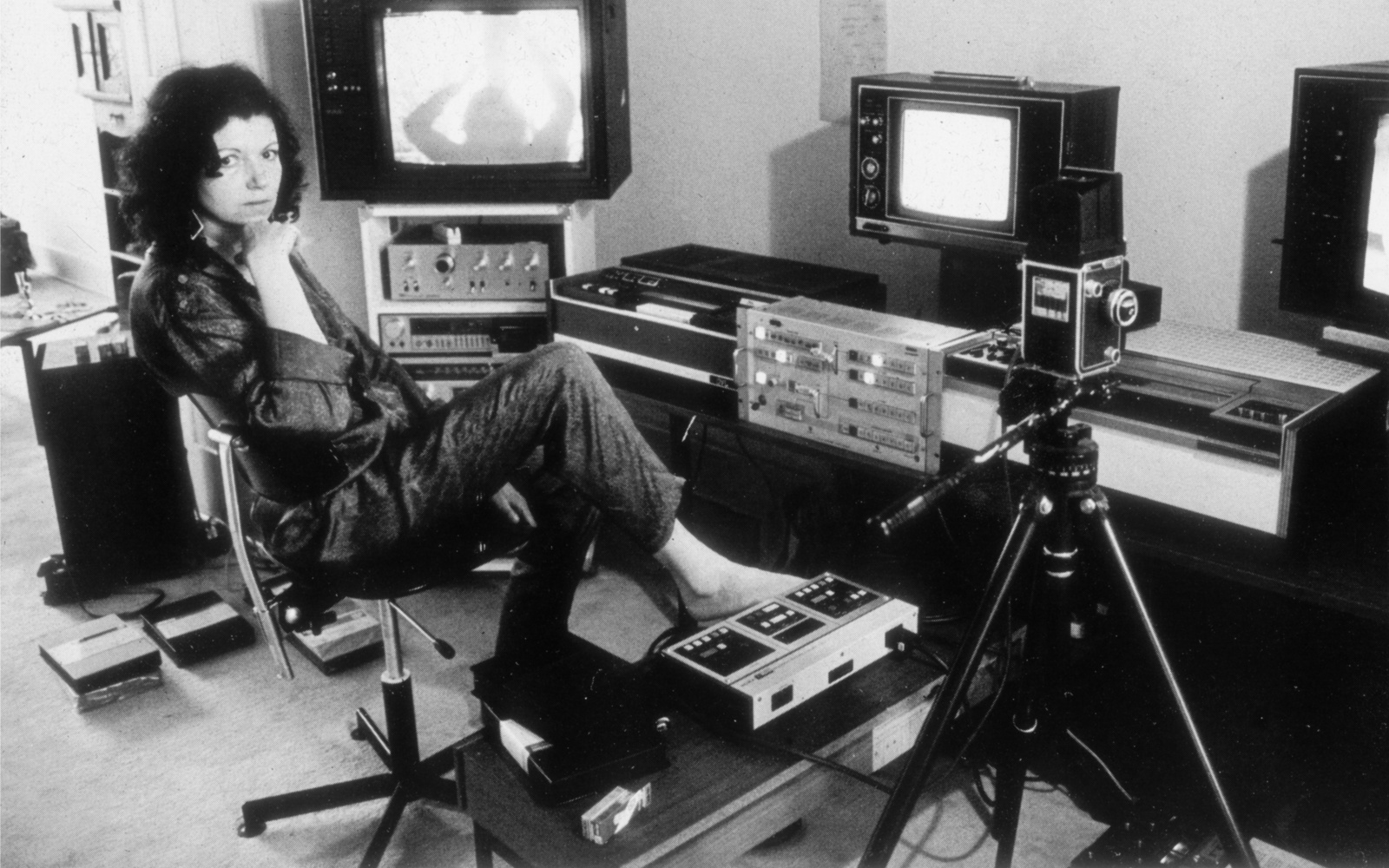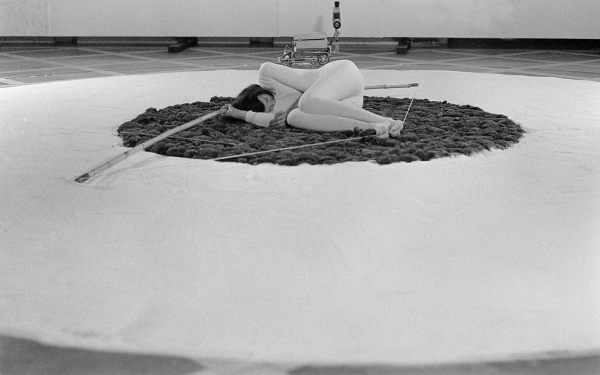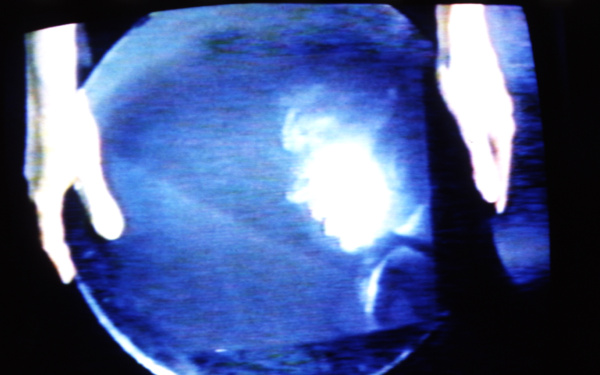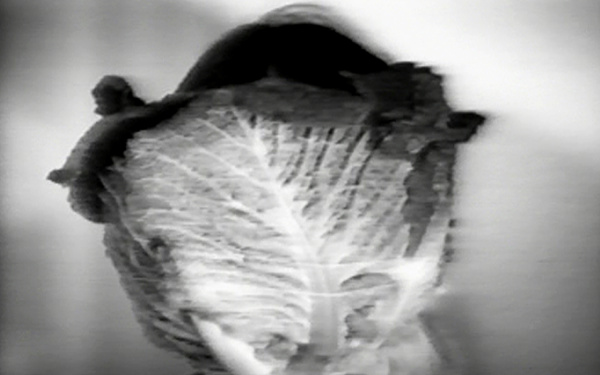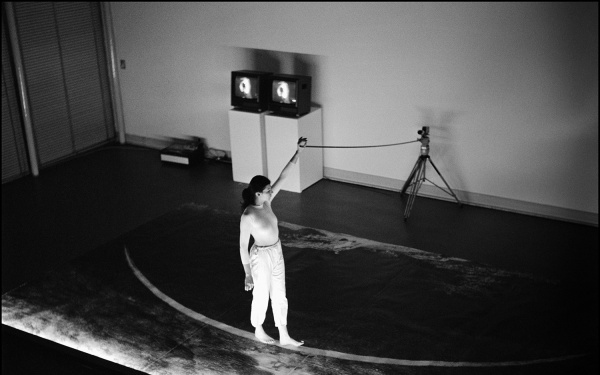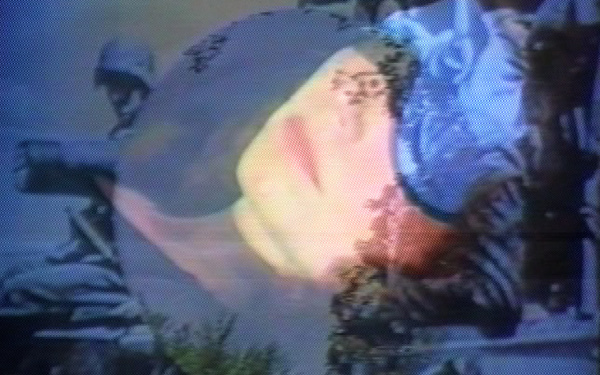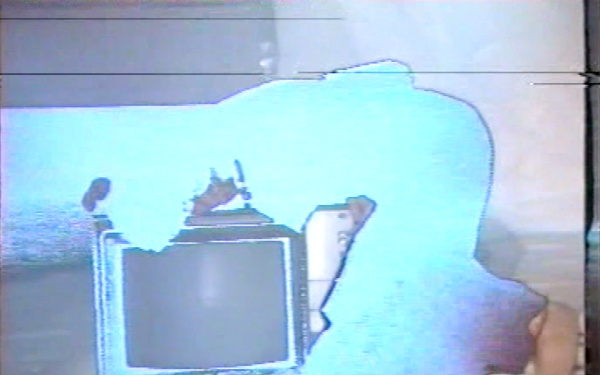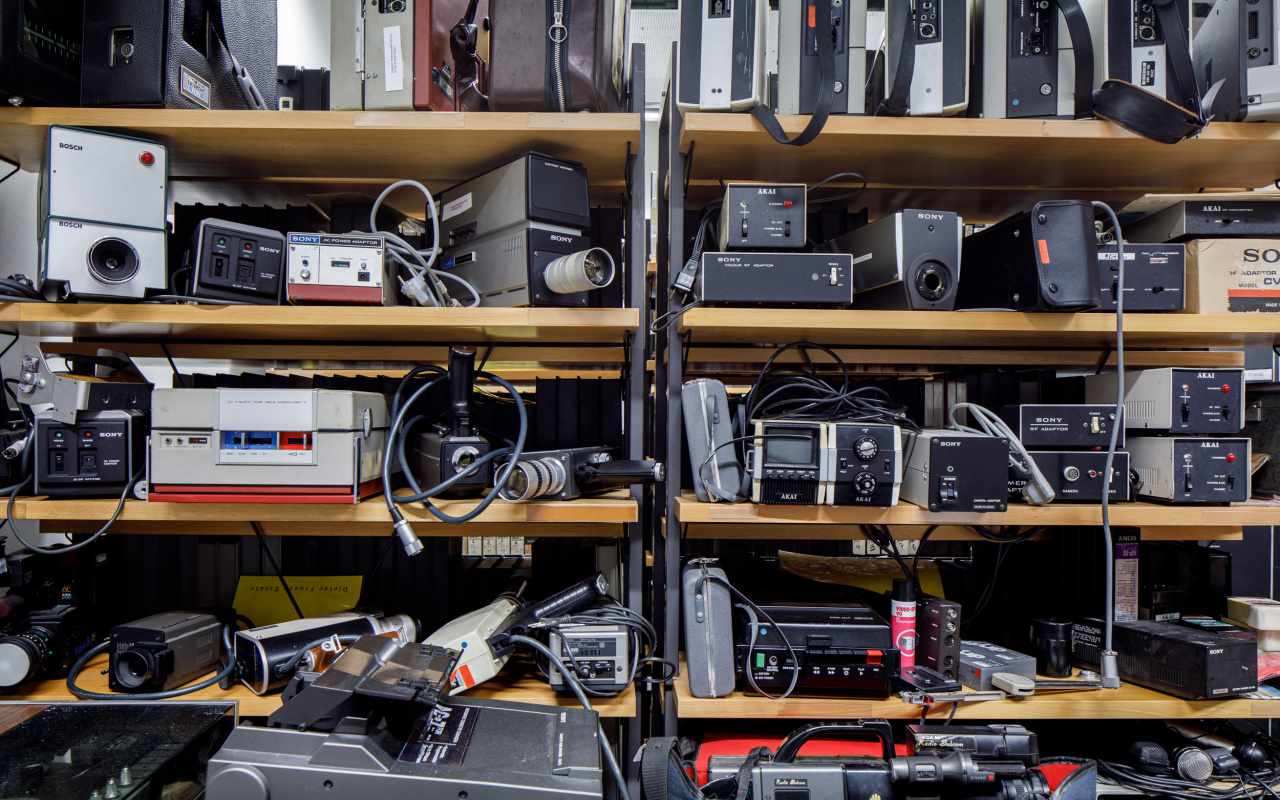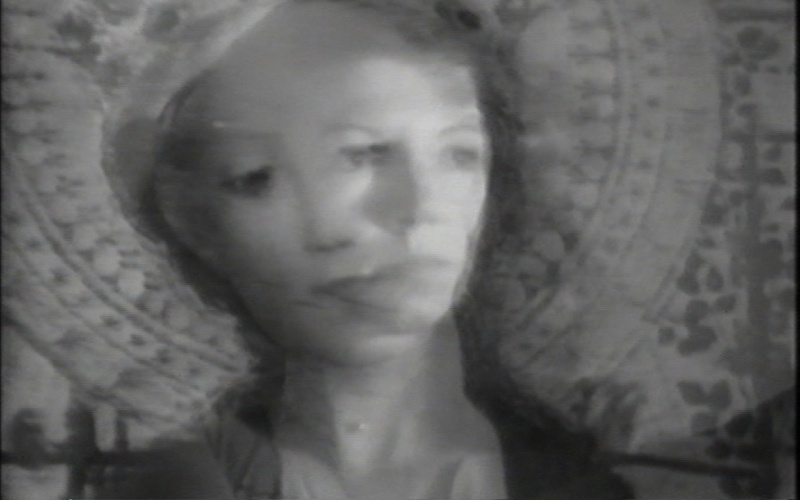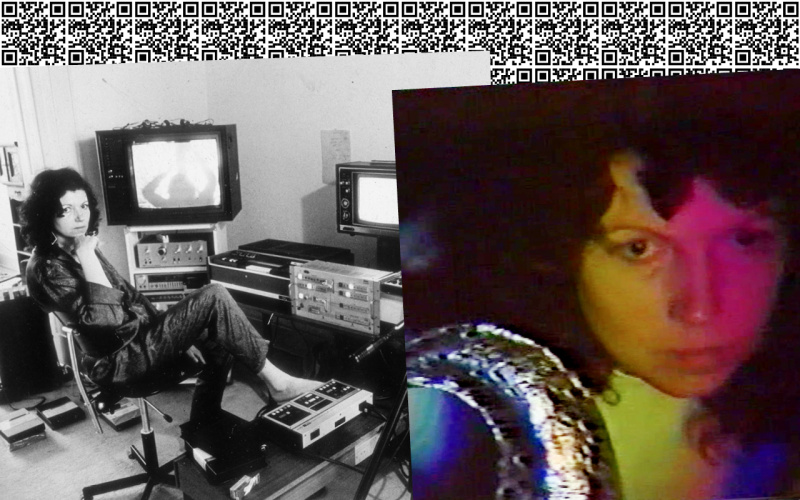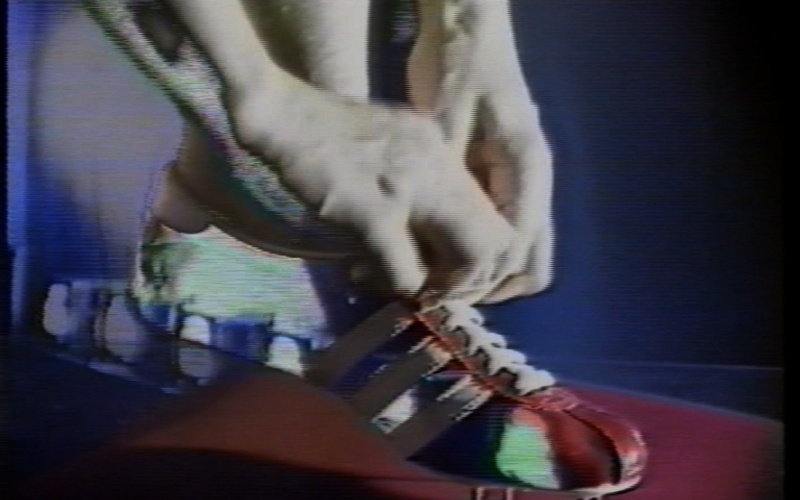Ulrike Rosenbach
Archive
Ulrike Rosenbach’s early performances, in which she experiments with video’s technical capabilities of direct recording, storage and playback of videos, sometimes attaching cameras to her body, received wide international acclaim. Through her participation in landmark exhibitions such as documenta 6 (1977) and documenta 8 (1987), Rosenbach became the most renowned German performance and video artist of her time.
While still a student at the Düsseldorf Art Academy, where she studied sculpture under Norbert Kricke and Joseph Beuys, the artist made the role of women in society her subject. Her hood and collar objects can be understood as symbols of women’s lack of freedom in patriarchal forms of society. She also took up this theme in her early video works, created as physical actions without an audience in front of a fixed camera in her studio, in which she questions her role as an artist, wife, and mother.
Her involvement with the American Women's Liberation Movement and a teaching position for feminist media art at the renowned California Institute of the Arts (Cal Arts) in Valencia/ Los Angeles, California in the mid-1970s reinforced Rosenbach's feminist approach and led to an expansion of her work: instead of autobiographical themes, she then focused on female role models and clichés and their cultural transmission. Rosenbach frequently utilized quotations from art history and worked with live recordings of herself superimposed on images of female figures from mythology, religion, art, and popular culture.
With the advances in digital image processing technology, Ulrike Rosenbach's videos in the 1980s changed into image compositions in which she used visual effects such as montages of computer-generated image and cross-fades. In search of primordial feminine principles and archaic matriarchal lines of tradition, in these years she increasingly shifted the focus of her works to fundamental aspects of the coexistence of humans and nature, the structure of space and time, and the cycle of coming into being and passing away.
In the 1990s, Ulrike Rosenbach created media sculptures in which the far-reaching emancipatory and sociopolitical contents of her work were plastically compacted. The artist transformed many of her performances into complex spatial installations. Her most recent video works are summaries and syntheses of earlier work cycles in which, in addition to quoting images from her own works, she draws on edited sequences from film history and other sources, combining these into atmospherically dense, new image collages.
Since 2018, Ulrike Rosenbach's video archive, which consists of more than 600 analog tapes, is being digitized and processed at the ZKM. This retrospective exhibition, which the late Peter Weibel initiated and which is created in close collaboration with the artist, draws on the results of this work on the archive and presents over 120 works — objects, videos, media installations and video sculptures, photographs, and drawings spanning more than five decades.
Conservation & Digitization
Since 2018, Ulrike Rosenbach's video archive consisting of more than 650 analog tapes – 150 digital and 500 analog formats – has been digitized and processed at the ZKM | Laboratory for Antiquated Video Systems. The archive offers insight into all creative phases of the artist. This also forms the basis for the artist's major retrospective at the ZKM | Karlsruhe entitled »Ulrike Rosenbach. today is tomorrow« with over 70 works from the video archive.
-
ZKM | Karlsruhe
Wissen – Collections, Archives & ResearchLorenzstraße 19
76135 Karlsruhe
Deutschland -
Contacts
ZKM | Archive
Tel: +49 (0) 721/8100-1967
E-Mail: sammlung-und-archive@zkm.deImage request
Tel: +49 (0) 721/8100-1967
E-Mail: bildanfragen@zkm.de
